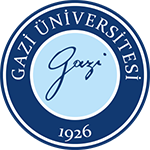ABSTRACT
Objective:
There is no information on how the knowledge of intern doctors that will work as primary health care providers use pulse oximetry in pediatric patients. The aim of this study was to assess and compare knowledge of intern doctors on the use of pulse oximetry especially in pediatric population and factors that affect their knowledge.
Methods:
A questionnaire consisting of ten questions on the use and principles of pulse oximetry were answered by intern doctors in a university hospital. A uniform answer box including possible response choices was given below each question, and subjects were asked to check the answers that they thought appropriate.
Results:
A total of 204 questionnaires were analyzed. Only one of third of subjects correctly answered that pulse oximetry measures hypoxia. The known complications of the procedure were not very well known (4-21%). Knowledge about the need for blood gases confirmation in diabetes (19%) and venous congestion (23%) were very low. The correct solutions were answered by 33% of subjects about inappropriate probe position and 26% about intense external light energy. The maximum score of correct answers was 22 in the questionnaire, and mean score of subjects was 12.9 ± 0.17. There was no correlation between age and number of departments with questionnaire scores.
Conclusions:
The importance of using pulse oximetry should be emphasized. In addition, training about pulse oximetry usage in pediatric patients especially in terms of complications and limitations of devices should be increased in the undergraduate training process.



